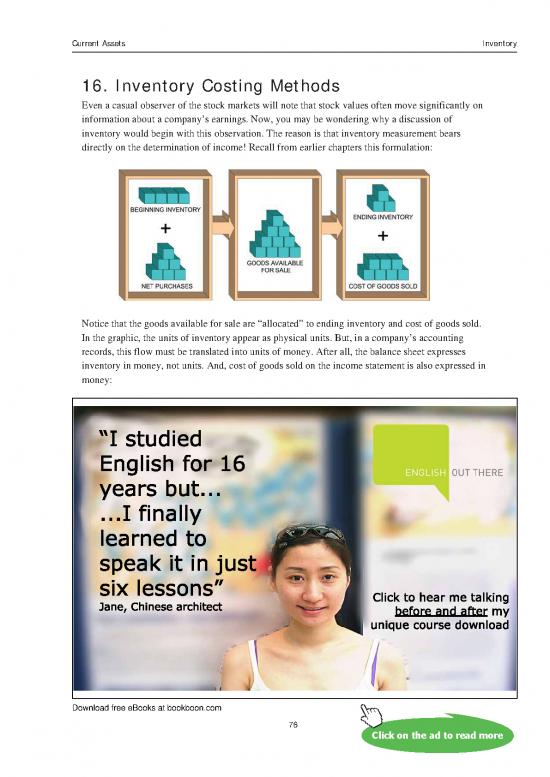
Properly applying the chosen method ensures compliance with tax regulations and accurate tax reporting, potentially leading to tax savings for businesses. By calculating the cost of goods sold (COGS) accurately, businesses can determine their gross profit margins. This information aids in assessing the financial viability of specific products, pricing strategies, and overall profitability. Yes, Shopify offers monthly inventory reports that provide you with the necessary data to carry out your preferred inventory costing method.
- This method is really only suitable for businesses dealing with high-value or distinct items, like art galleries.
- It’s useful for smaller businesses and companies that sell high value items like cars, art and jewelry.
- FIFO is normally considered the costing method crowd favorite because it is considered to create the most accurate picture.
- However, it’s difficult to achieve unless items are distinct and their costs are easily traceable.
IAS 2 accounting for storage, shipping and handling costs may differ from US GAAP

This includes overhead expenses such as marketing, administrative salaries and general office expenses. These are instead treated as period costs and are expensed in the period they are incurred. As you can see, the COGS are attributed to the average of all the purchases made in the financial period. Under IAS 2, inventory may include intangible assets that are produced for resale – e.g. software. Unlike IAS 2, US GAAP allows use of different cost formulas for inventory, despite having similar nature and use to the company. Therefore, each company in a group can categorize its inventory and use the cost formula best suited to it.
Next Post5 Tips on Choosing the Best Inventory Management Software for Your eCommerce Business
Elsewhere, this method is not allowed by the International Financial Reporting Standards (IFRS). For many businesses, it’s a system that is just too complex to justify using. Obviously, both cost of goods sold (COGS) and cost of inventory are important metrics, and they have some overlap, but they’re separate data points for a reason. Costs that are not directly linked to product acquisition or preparation are not considered inventoriable.
How to calculate inventory costs
Stockout costs represent the loss of income and additional expenses resulting from inventory shortage. Our cloud-based inventory management solution allows you to manage your inventory using mobile devices, making it easier and more convenient for you to keep tabs on your stock. During the course of the year, the retailer sold a grand total of 200 sunglasses. During the course of the year, the retailer sold 275 of those shoes, meaning they have 125 units still in their inventory. I’ll say it again, knowing how to manage inventory is a vital activity for companies. But it can be intimidating, especially as businesses grow and processes become more complex.
Neglecting to include inventory management when forecasting
The gross profit method is used to estimate inventory values by applying a standard gross profit percentage to the company’s sales totals when a physical count is not possible. The resulting gross profit can then be subtracted from sales, leaving an estimated cost of goods sold. Then the ending inventory can be calculated by subtracting cost of goods sold from the total goods available for sale. In addition, this method can be useful for businesses that experience frequent price fluctuations.
Is the Weighted Average method right for my business?
As an example, a company that sells electronics may use weighted average cost to avoid fluctuations in COGS due to changes in the price of components and raw materials. This method is often used by companies with large amounts of inventory that have a similar cost. For example, grocery stores may use the weighted average cost method to calculate COGS for items like milk or eggs, which have a similar price per unit. Inventory costs directly impact financial statements, such as the balance sheet and income statement. Properly valuing inventory allows businesses to present accurate financial information to stakeholders, investors, and regulatory authorities. Inventory costing also provides a certain level of inventory control, which can help reduce total inventory costs and avoid over- or understocking.
Depending on your type of company and the types of inventories involved, GAAP or IFRS can be more advantageous by causing your balance sheet to increase. The remaining assets in the inventory are matched to assets that are most recently produced or purchased. Read on to learn about each inventory valuation method and how you can choose one that’s right for your business. How you choose to value your inventory has an impact on multiple elements in your financial statements. Be sure to proactively track and get rid of dead stock accumulation to free up valuable storage space for more high-selling items.
Retailers managing inheritance tax often struggle with reconciling these differences, leading to potential inaccuracies in financial reporting and decision-making. LIFO is not an officially recognized inventory costing method internationally because it can lead to a higher than normal inventory valuation—and is thus heavily scrutinized. The pros and cons of the specific identification method depend on the size of your retail business, according to the Corporate Finance Institute (CFI). For the specific identification method to suit your retail business, you need to be able to confidently and accurately identify the location, cost, and sale amount of every stock-keeping unit (SKU) in your inventory. To illustrate, assume Classic Cars began the year with 5 units in stock.

